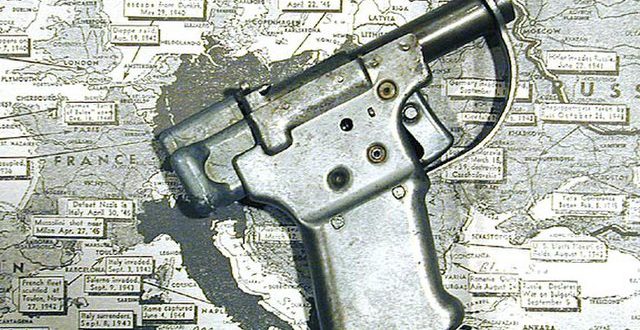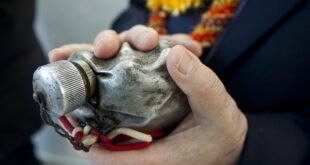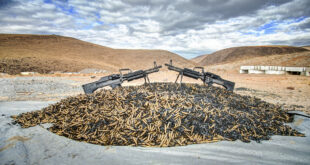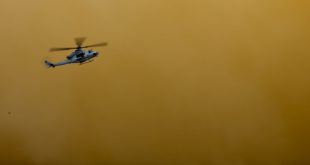by Robert Ramsour
The FP-45 was an unknown and surreptitious pistol developed in WWII to help our captured allies regain control of their country, or province. In order to conceal its real function as a firearm, our government represented this pistol as a flare projector. It was officially called the FP-45. A million of these guns were made in three months with no serial number, and no inspector nor military markings – in order to be unattainable to know who made them and where they came from.
The FP-45 was secretly called the Liberator. Its purpose was to help insurgents or resistance fighters in occupied areas. The gun was only single shot, made out of sheet metal. No rifled barrel or magazine. It was believed that its crude and ineffective design would be ignored by the enemy. Moreover, the mere presence of a liberator would hopefully damage enemy morale, knowing that the insurgents may have a firearm.
The Liberators were placed in a wax coated box with 10 FA-42’s, and 45 ACP Frankfurt Arsenal rounds. They were parachuted into enemy occupied areas, with a pictorial instruction sheet with no words so that anyone regardless of language could quickly learn to operate the pistol. Users sneak up on the enemy at close range to kill or disable them in order to take their superior weapons and equipment.
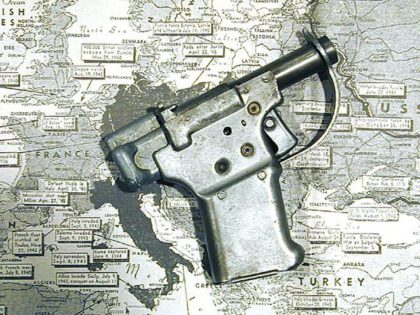
General Eisenhower and Gen. “Vinegar Joe” Stilwell were against this project. General MacArthur approved allowing thousands of FP-45’s to be dropped into the Pacific theater. Eventually Billy Donovan’s newly created OSS division took over the entire FP-45 project, and allowed some Liberators to be dropped into Europe.
In August 1942 a million of these FP-45s were made in only three months. This project was another example of how American industrial might helped win the war.
READ MORE about a secret munitions factory in World War II.
At the war’s end, in 1945, over 600,000 of these pistols were dumped into the ocean off of England’s coast, and the remaining inventory were melted into scrap.
Once souvenirs of these pistols started showing up in the soldiers’ duffle bags, the ATF (Alcohol Tobacco and Firearms agency) considered these Liberators illegal, which further aided in their destruction and scarcity.
Twenty-two years later, this idea of a cheap clandestine pistol was resurrected by the CIA. In the early stage of the Vietnam conflict, the pistol was called the deer gun, similarly made to the FP-45. The new versions were chambered in 9mm. By the time the first 1,000 deer guns were made, the Vietnam conflict had escalated to a full blown war, which precluded the need for this pistol. The CIA concealed the project, and ordered the deer guns to be destroyed. Fewer than 20 deer guns exist today.
In conclusion, this author is not sure if this clandestine project was a success; but it will always be remembered for its psychological warfare attributes, and how the United States – from WW2 to Vietnam to now Ukraine – is willing to help the resistance in enemy territory.
 Soldier of Fortune Magazine The Journal of Professional Adventurers
Soldier of Fortune Magazine The Journal of Professional Adventurers


